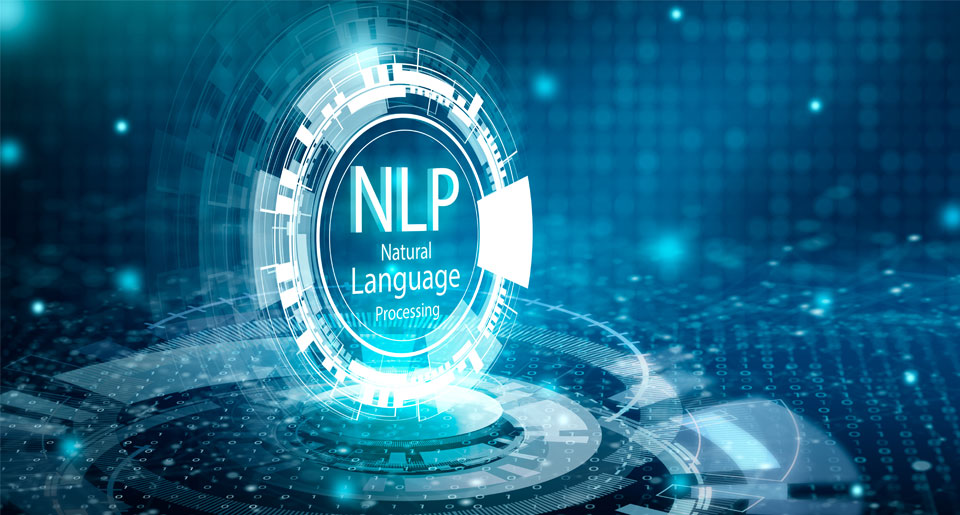What can NLP bring to enterprise software?

Mainly due to science fiction movies, NLP or ‘Natural Language Processing’ may be one of the most typical applications of AI. It was a dream come true for geeks and tech enthusiasts when digital assistants like Alexa and Siri started answering questions.
But there’s more to NLP than looking up the weather or setting reminders using speech commands. NLP algorithms have found applications from filtering spam to criminal investigations. This article explores what natural language processing is, how it works, and its applications.
What is NLP or Natural Language Processing?
In straightforward terms, Natural Language Processing or NLP is a set of technologies that enables computer systems to understand natural human language. It‘s a field that brings together linguistics, computer science, and artificial intelligence to analyze and understand human language. Historically, the ability of a system to understand human language was a measure of system intelligence.
While the technology isn’t there yet, the goal is to develop systems that can understand complex sentence structures like a human being and computers can handle at a large scale. For example, we can read and understand 10,000-page documents and make sense of them, but we can’t go through them in seconds.
This is not an easy task; the meaning of sentences or words can change depending on the tone and emphasis.
For example, consider this famous example: “She said she did not take his money.”
Depending on the word you emphasize, the sentence has a different meaning.
Then some sentences change the meaning if there’s an extra comma, not to mention elements like sarcasm, irony, or exaggeration.
A significant aspect and often a major application of NLP systems is converting unstructured data into structured formats . For example, if you ask a digital assistant to “Buy a dozen eggs,” the system has to convert this into an online order that sounds like:
Item: eggs
Quantity: 12
Similar processes are used to extract the keywords: the people mentioned, dates, times, quantities, etc. from large amounts of text like newspapers, websites, emails, or text. Google search uses similar technology to rank websites and pages for specific search queries.
NLP systems often use neural networks, machine learning, and deep learning technologies. These systems mimic the human brain and ‘learn’ to understand the human language from huge datasets.
What can NLP bring to enterprise software?
Natural Language Processing can enhance the capabilities of enterprise software solutions. For everything from customer service to accounting, most enterprise solutions collect and use a huge amount of data. And organizations invest significant resources to store, process, and get insights from these data sources. But key insights and organizational knowledge may be lost within terabytes of unstructured data.
NLP can transform this unstructured data into structured data, which organizations can then visualize and analyze.
For example, customer-facing interfaces of an organization such as mobile apps may collect user feedback. While we can easily analyze ratings and ranking, it won’t be easy to go through terabytes of comments and suggestions manually. But with NLP tools, you can find out the key trends, common suggestions, and customer emotions from this data.
Natural language processing can also improve employee and customer experience with enterprise software. NLP enhances the interaction between the user and the software. The user can explain what they need in their language and the software can bring them exactly what they want.
For instance, imagine a new user trying to edit a photo or a video. While most software solutions have a help option, you have to use keywords to find what you’re looking for. For example, if they’re trying to add an incandescent bulb, they may look up “light source” or “shadows” or “blur”. But with NLP, they may be able to ask “how to add an incandescent bulb and the software will show the relevant results”.
Or consider a customer trying to find out the details of their last transaction. If they don’t know how to use the software, they may have to talk to a support person. And support people may not be available 24/7 or there may be significant wait times. But with a chatbot, they can ask in plain English and get the answers instantly.
What are the different applications of NLP?
Natural language has plenty of applications in many different fields. Here are a few of them.
Email filters: Earlier NLP was limited to just filtering the spam emails from your inbox. These days, email software like Gmail filters emails into general inbox, promotions, social, etc. This email software also tags emails as important or potentially spam or unsafe.
You can even set up custom email filters that move mails to specific inboxes. And while searching, you can filter out emails based on their contents, attachments, and more.
Email filters use advanced natural language processing to understand the tone and context to mark them as important or send them to spam. Some digital assistants work with an email to add events to their calendars by understanding the contents. These NLPs are mostly based on neural networks, and they are constantly learning and evolving from feedback.
Smart assistants: Early smart assistants were only able to perform simple voice searches. But now, they have evolved into advanced algorithms that can identify songs, book tickets, schedule events, or even make phone calls for you. They’ve become an integral part of intelligent home ecosystems, letting users control their home lighting, temperature, and more with voice commands.
These assistants use NLP to translate speech to text and back, detect wake words, understand keywords, and look up relevant replies for user queries. Most smart assistants work with cloud connectivity. But with advances in NLP, OEMs have managed to bring essential functions like wake word detection to the edge.
Predictive text: You must have noticed that when you’re typing a message on your smartphone, suggested words often come up on the keyboard. Sometimes it’s the word you’re typing or the next word. These predictive text systems have played a significant role in the widespread adoption of touchscreen keyboards.
Predictive text has appeared on the desktop, offering Gmail and Google doc suggestions. They’re also becoming increasingly valuable for wearable tech where full-length touchscreens are not comfortable.
Language translation: This is one of the significant advances in natural language processing over the last decade. Technologies that offer live translation have become increasingly commonplace even on smartphones and are continuing to erode language barriers.
Language translation is also one of the complex applications of NLP. These systems must understand a given sentence and then create the same sentence in a different language without losing meaning.
Even though wrong translations continue to make the internet laugh, the technology appears to be improving. And organizations are developing solutions that cover more languages. By leveraging NLP, apps like Google translate and Google lens have made life easier for travelers and tourists.
Smart search engines and more relevant search results: As you may have noticed, search engines have evolved from just looking up web pages . Google search offers nearby restaurants or gas stations and their contact info and directions. And if you look up a movie, you’ll get details about their cast, crew, and more.
NLP is working behind the scenes to understand the information within websites and index them according to search relevance.
A similar evolution has happened with enterprise search as well. For example, Sinequa’s search solution can detect different languages and apply specific algorithms for semantic analysis. The search solution can analyze troves of emails, messages, notices, memos, and more and help build a clear picture for the user.
Data analysis: NLP is used to build data analysis technologies that offer cognitive search capabilities. These solutions can analyze text, understand the relationships between different elements, and index them into structured data. Users can then find patterns, trends, and actionable insights from this data. For example, you can use natural language processing to develop content strategies based on social media engagement and user emotions.
Text analysis: As discussed above, analyzing and indexing vast amounts of text is not easy. It takes a lot of skill and resources to find out what’s relevant, organize them, and form a clear picture. If you’re investigating an organization for fraud, you may have to go through all communication between department members to find out who may have had a role and what they did. This does not include the files, receipts, banks statements, and other documents.
With NLP text analysis solutions, you can easily find the relevant parties and information and significantly decrease the investigation time and resources. Besides investigations, there are many text analysis applications, all essentially helping you organize unstructured data into indexed structured data.
What are the challenges of analyzing text?
The main challenge in analyzing text is that languages are complicated. Unlike numbers and figures, it’s not easy to define the relationship between words in a sentence in a way computers understand. This is not to mention elements like irony, sarcasm, puns, and others which often have a meaning that doesn’t correlate with their literal meaning.
Another challenge is the lack of training data. Most natural language processing solutions use AI and deep learning to learn languages. And for robust systems, you need a lot of data. For example, you’ll need a database with words and their pronunciation for developing a speech recognition system. This is not easy to get; there are many accents and regional differences in how words and sentences are pronounced.
Even when data sets are available, they often reflect historical discrimination, biases, and norms. And the resulting NLP models tend to reflect this.
For example, for centuries, people have associated certain jobs with women and others with men. If you use training data with these problems to develop a predictive text algorithm, the results will also reflect these biases.
How does Sinequa use natural language processing for its enterprise search platform?
Sinequa uses natural language processing to convert unstructured data to structured and indexed data. Data connectors collect raw data from various sources and process them to identify key elements and their relationships. Natural Language Processing enables users to type their queries as they feel comfortable and get relevant search suggestions and results.
The solution can look for synonyms and different spellings or spelling mistakes and intelligently ignore irrelevant results.
Sinequa’s enterprise search platform uses NLP to deliver actionable insights from unstructured data and a smooth user experience.






